A deep travel overview of Hokkaido for my custom Japan private tours

Hokkaido is an enormous island second in size only to Honshu and it is also the part of Japan that was “developed” last by the Edo Shoguns (1600-1868). Therefore, the island is much less developed and full of natural attractions and superb seafood . . . The island is super special, due to all that "nature," especially with private travel clients from Southeast Asia (and Australia): 1. Hokkaido is the closest match to the wild worlds of Canada and the USA. 2. Hokkaido is the closest world class skiing destination to Southeast Asia and Australia. Most of my Hokkaido clients travel the island exclusively with my unique independent self-guided tours & services. However, guides are widely available in English, Russian and Chinese in and around Sapporo (please enquire).
Until only recently, Hokkaido was a wild world known as Ezo or Yezo, and way off the beaten track for all Japanese people except the military and traders. The Ezo people lived from hunting and fishing and got rice and iron through trade with the Japanese. The primary people of Hokkaido were the Emishi who, like the Ainu, were not of the dominant Japanese bloodline (Yamato descent). These peoples were driven ever further north by the evolving civilization of the "Japanese" and their brilliant adoption of Chinese ideas. Today, the Ainu are Hokkaido's indigenous people and the last remaining indigenous people of Japan. The Emishi are long gone and assimilated.
Hokkaido is by far Japan's coldest area with relatively cool summers. The average January temperature ranges from −12 to −4 °C (10.4 to 24.8 °F). The average August temperature ranges from 17 to 22 °C (62.6 to 71.6 °F), when the central part of coastal Japan is in the mid-30s and super humid.
Unlike the rest of Japan, Hokkaido is normally unaffected by Japan's super wet June–July rainy season or the typhoons of August and September.
For cherry blossom hunters, Hokkaido is great because the cherry tree blossoms only break out in May.
Other attractions, in no particular order, are scuba diving, hiking, great seafood, amazing flowering fields, excellent dairy, and crafted beers and whiskey. Hokkaido is also world famous for its really well choreographed Sapporo Snow Festival.
Your Japan Private Tours has organized many trips to Hokkaido, mostly for Australian and Asian clients. It’s a big place and getting there can be part of the fun (i.e. go by train!). Most of my Hokkaido clients travel the island exclusively with YJPT's super-practical self guided tours & travel services. In the Sapporo area, guides are widely available in English, Russian and Chinese (please enquire). Let me know if you are interested in independent self-guided or guided travel in Hokkaido. I know the area well . . . Learn more!
Guided tour FAQs (start time and location; itinerary design; expenses; tips . . .). Self-guided tour FAQs (design; delivery; types; expenses . . .).
- Hokkaido private travel transportation, accommodation overview
- Hokkaido main hiking, nature and hot spring destinations
- Hokkaido food & cuisine overview for private travel
- Hokkaido history overview
Content by Ian Martin Ropke, owner of Your Japan Private Tours (est. 1990). I have been planning, designing, and making custom Japan private tours on all five Japanese islands since the early 1990s. I work closely with Japan private tour clients and have worked for all kinds of families, companies, and individuals since 1990. Clients find me mostly via organic search, and I advertise my custom Japan private tours & travel services on www.japan-guide.com, which has the best all-Japan English content & maps in Japan! If you are going to Japan and you understand the advantages of private travel, consider my services for your next trip. And thank you for reading my content. I, Ian Martin Ropke (unique on Google Search), am also a serious nonfiction and fiction writer, a startup founder (NexussPlus.com), and a spiritual wood sculptor. Learn more!
Hokkaido private tour & travel transportation and accommodation overview
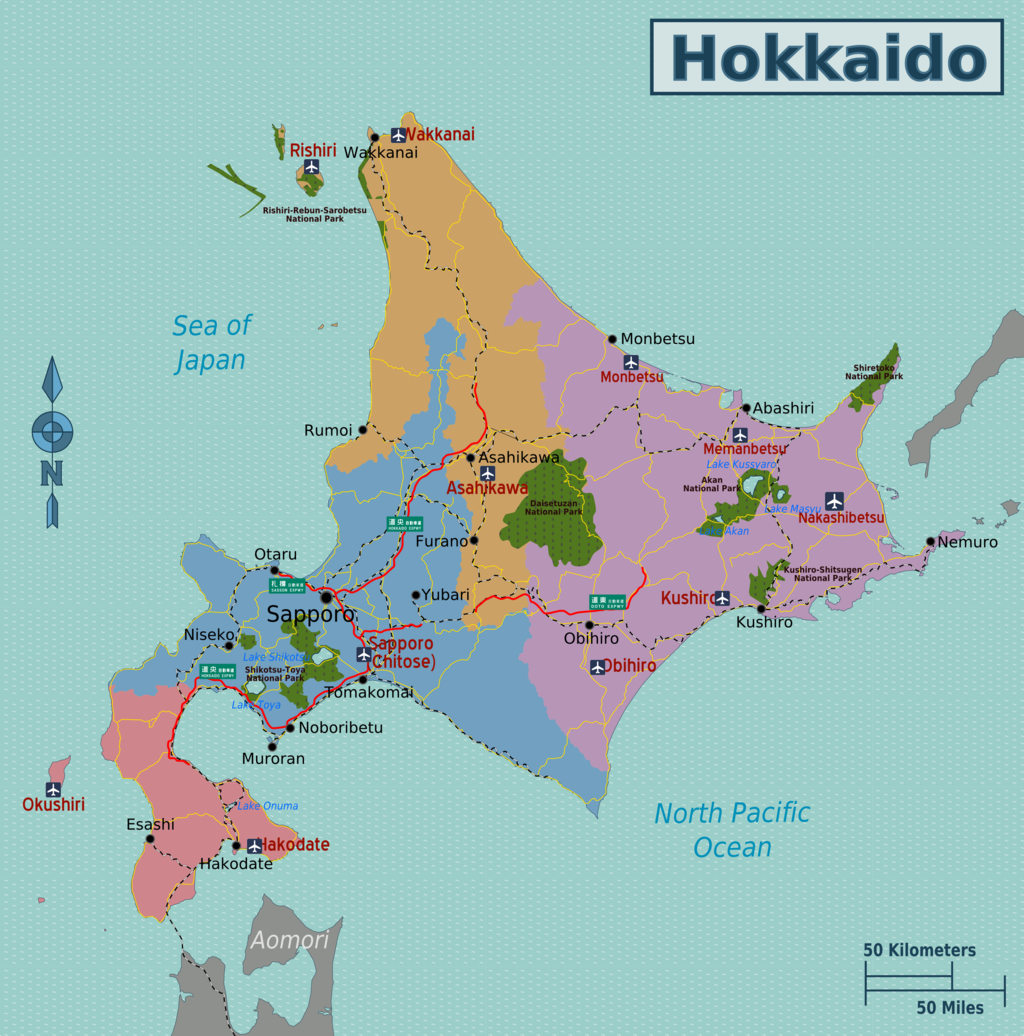
Hokkaido is easy to get to by airplane from Tokyo (multiple flights every day from both Narita and Haneda) and bullet train (as far as Hakodate on the southern tip of Hokkaido). However, travelers should be aware that just getting to Hokkaido will take nearly a day of travel time.
Hokkaido is huge, about the size Austria and twice as large as Holland (Netherlands) or Switzerland. This means traveling around the island, generally by train, takes a fair bit of time. For example, a train trip to the famous east-side coastal areas of Abashiri or Nemuro, takes nearly 6 hours. Long overland train travel should be taken into account when traveling in Hokkaido and planning your travel time on the island.
- Tokyo to Sapporo: 90 minutes by air; 8.5 hours by bullet and train
- Tokyo to Hakodate: 5 hours by bullet train
- Sapporo to Otaru: 30-40 min by train
- Sapporo to Asahikawa: 1.5 hours by train
- Sapporo to Furano: 3 hours by train
- Sapporo to Kushiro: 4 hours by train
- Sapporo to Abashiri: 5.5 hours by train
- Sapporo to Nemuro: 6.5 hours by train
Hokkaido accommodation for private tours & travel
Hokkaido is one of the most popular Japanese domestic tourist destinations and therefore has all the hotels, pensions, resorts and local accommodation you can imagine. In the big cities of Sapporo and Hakodate you can find inexpensive business hotels and local bed & breakfast establishments. And generally, for anywhere on the island, the top hotel booking engines will provide all the options any traveler will require. For specialty accommodation beyond the search engines, Your Japan Private Tours can assist with bookings.
For a better understanding of YJPT's tour and service design and design process, expenses, and prices please see my compact but informative full service pricelist in JPY and USD, all retail priced.
- Hokkaido private travel transportation, accommodation overview
- Hokkaido main hiking, nature and hot spring destinations
- Hokkaido food & cuisine overview for private travel
- Hokkaido history overview
Hokkaido nature & culture highlights
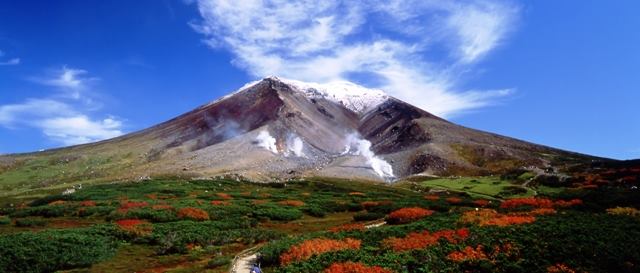
Hokkaido is a huge expanse of mountainous areas, active volcanos, dense forests, wild rivers, incredible coastlines, and agricultural vistas. The island is by far the most nature-rich area in the country with a great variety of ecosystems. This means outstanding wildlife and birdlife watching experiences. And winter sports activities that include powder* skiing, snowboarding, snowshoeing and snowmobiling. *BTW: Hokkaido's light & dry deep powder snow is called “Japow.”
- Hokkaido private travel transportation, accommodation overview
- Hokkaido main hiking, nature and hot spring destinations
- Hokkaido food & cuisine overview for private travel
- Hokkaido history overview
Hokkaido destination highlights from A to Z
Abashiri: On the eastern coast of Hokkaido and usually visited in the winter months to see the drift ice (ryuhyo) in the Okhotsk Sea . Abashiri’s North People Museum is also noteworthy for its exploration of the lives of the Ainu and other northern Japanese indigenous peoples.
Ainu villages or museums: There are a few living Ainu villages and Ainu culture museums and all of them are in Hokkaido (see history section below to understand why!). 1. Shiraoi Poroto Kotan: south of Sapporo and therefore a day trip from Sapporo. 2. Biratori Choritsu Nibutani Ainu Culture Museum: southeast of Sapporo and again a day trip. 3. Lake Akan Ainu Kotan (eastern Hokkaido, inland in the mountains). 4. Sapporo Pirka Kotan Sapporo Ainu Culture Promotion Center: in Sapporo. 5. Hokkaido Museum: in Sapporo.
Akan National Park: Akan is all about the enormous crater lakes or caldera lakes and their crystal-clear waters (up to 40 meters on Lake Mashu!). Asahikawa: This city, Hokkaido’s second largest, is especially popular with southeast Asian travelers because of its zoo and its penguins in the zoo. However, it is also the base camp for winter adventure activities like snowmobiling, snowshoeing and dog sledding. It is possible to do Asahikawa, i.e. the zoo, and Furano (see below) in a single day trip from Sapporo.
Daisetsuzan National Park: Daisetsuzan National Park, in the center of the island, is Japan’s largest national park. The park has some of the most rugged scenery in the country including Hokkaido’s highest peak, Asahidake (2,500 meters). For the lucky the park offers wildlife sightings that range from brown bears, ezo deer, to rare birds like the black woodpecker and Blakiston’s fish owl. In spring, alpine flowers paint vast vistas of color across the landscape.
Furano: Furano is on the must-see list for nearly all travelers from southeast Asia and for good reason. Within the small area of Furano, which is an easy day trip from Sapporo, tourists can see amazing lavender fields, the man-made Blue Pond Instagram sensation Blue Pond, and, in winter, cross country skiing. Furano is a very popular destination for the Japanese and the area is full of farm foods and tasty new treats of all kinds: perfect for families!
Hakodate: Hakodate, Japan’s first open-trade foreign port, is where the bullet train line from Tokyo ends and thus the perfect arrival point in Hokkaido by train. The city’s steep hillside Muromachi district is full of old European-style buildings. And in the port area many tourist stroll through the red-brick warehouse area, now full of cafes and boutiques. cheesecakes at Pastry Snaffle’s are a great way to satisfy your sweet tooth). And Hakodate’s morning market is one of the best in all of Japan!
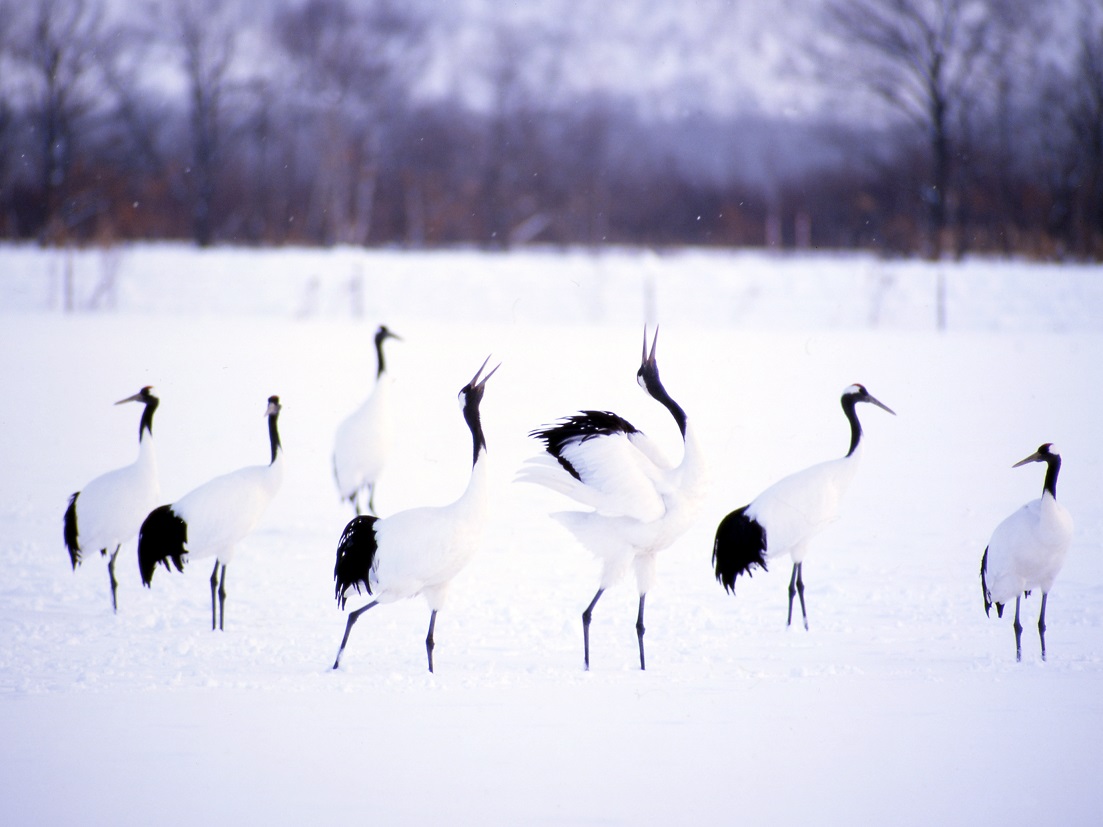
Kushiro-Shitsugen National Park: The wetlands of Kushiro-shitsugen National Park are world famous for red-crowned white cranes and their haunting mating dances (February-March), as well as a wide range of water birds, shore birds and reed landscapes. The majestic cranes of Kushiro are a national symbol of luck and longevity, as they were believed to be extinct at one point (but not anymore!). It is recommended to spend at least one or two nights in the area to fully experience the wonders of these marshlands and the birds and animals that thrive there!
Jozankei Onsen: Jozankei Onsen is only an hour south of Sapporo, nestled in the northern edges of Shikotsu-Toya National Park, along the high cliffs of the Toyohira River. The Jozankei onsen waters were discovered in 1866 and the town now has many ryokan, restaurants and shops catering to hot spring tourists. And numerous ryokan offer day bathing to day visitors for about Yen 1,000.
Matsumae: The former castle town of Matsumae is south of Hakodate right on the Tsugaru Strait that separates Hokkaido from Honshu’s northern most province of Aomori. It is the only castle town ever built on the vast wild island of Hokkaido (see history below). Until the end of the Edo period (1603-1868) this fine castle town was the only mainland Japanese settlement on the island. The town became very prosperous as a shipping trade center.
Noboribetsu: Noboribetsu Onsen is for many the most popular hot spring town in Hokkaido. The hot spring area is famous for its variety of waters that spring out of Jigokudani or "Hell Valley" above the resort town. Noboribetsu is also part of Shikotsu-Toya National Park and makes the perfect base camp for park exploration and also Ainu people and culture learning.
Otaru: Otaru is a 30-min train ride west of Sapporo and loved by all for its historic canal warehouse district and the herring fishing mansions dating from the late 19th century. As the city is so small and so charming it is a good base camp also for exploring the nearby Shakotan Peninsula (see below) or for day skiing in flashy Niseko.
Rishiri & Rebun Islands: The islands of Rishiri and Rebun are just 16 kilometers off the northwestern tip of Hokkaido island and it takes quite a while just to get to the ferry port. Together the two islands and the seas around them (and a bit of the mainland) form the Rishiri-Rebun-Sarobetsu National Park. Rishiri Island is easy to spot, with its dramatic white peak in the center. For tourists the islands are considered exceptional (and not easy) hiking areas far from the madding crowd. In late spring the island landscapes become so colorful that they are known as the “the floating flower islands,” especially Rebun. The islands are reached by ferry from the laid-back port of Wakkanai.
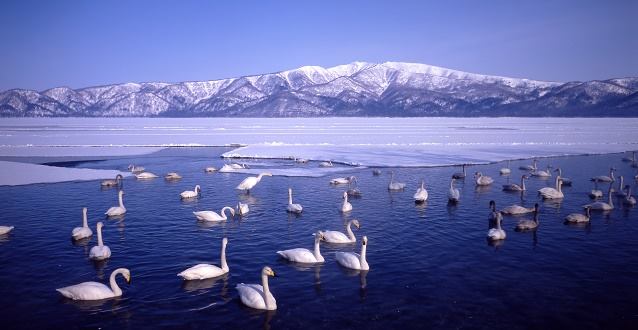
Sapporo: Sapporo is a superbly designed modern city (of just over a million people) with lots of space that usually is base camp for all visitors to Hokkaido, if only for a night or two. The city has an exceptional restaurant scene, killer museums and, in winter, amazing snow and ice festivals. And then there are great morning markets and Japan’s oldest beer and whiskey culture. It' always worth a day or two at the beginning of your Hokkaido travels and, then, one more night at the end before you fly out of Chitose Airport.
Shakotan Peninsula: This rugged coastline peninsula, said to look like a dragon’s tail, is about 30 kilometers long. It is part of the Niseko-Shakotan-Otaru Kaigan Quasi-National Park. It is a perfect day trip for casual coastal hiking from Otaru or Sapporo and also one of the least known diving paradises in northern Japan.
Shikotsu-Toya National Park: One of Hokkaido’s most active volcanoes, Mount Usu, lies at the heart of Shikotsu-Toya National Park, a UNESCO Global Geopark. The park is just south of Sapporo and offers a wide range of attractions from hot spring bathing to hiking and plant appreciation and more.
Shiretoko Peninsula: The Shiretoko Peninsula is a UNESCO World Heritage Site and one of the richest integrated ecosystems on the planet. The area is famous both for animals on land and sea life. Expect green ancient forests, brown bears, deer, foxes, migratory birds and rare seabirds. The peninsula is far from Sapporo and it takes nearly 6 hours by train just to get there and this should be kept in mind.
- Hokkaido private travel transportation, accommodation overview
- Hokkaido main hiking, nature and hot spring destinations
- Hokkaido food & cuisine overview for private travel
- Hokkaido history overview
Hokkaido food & cuisine highlights
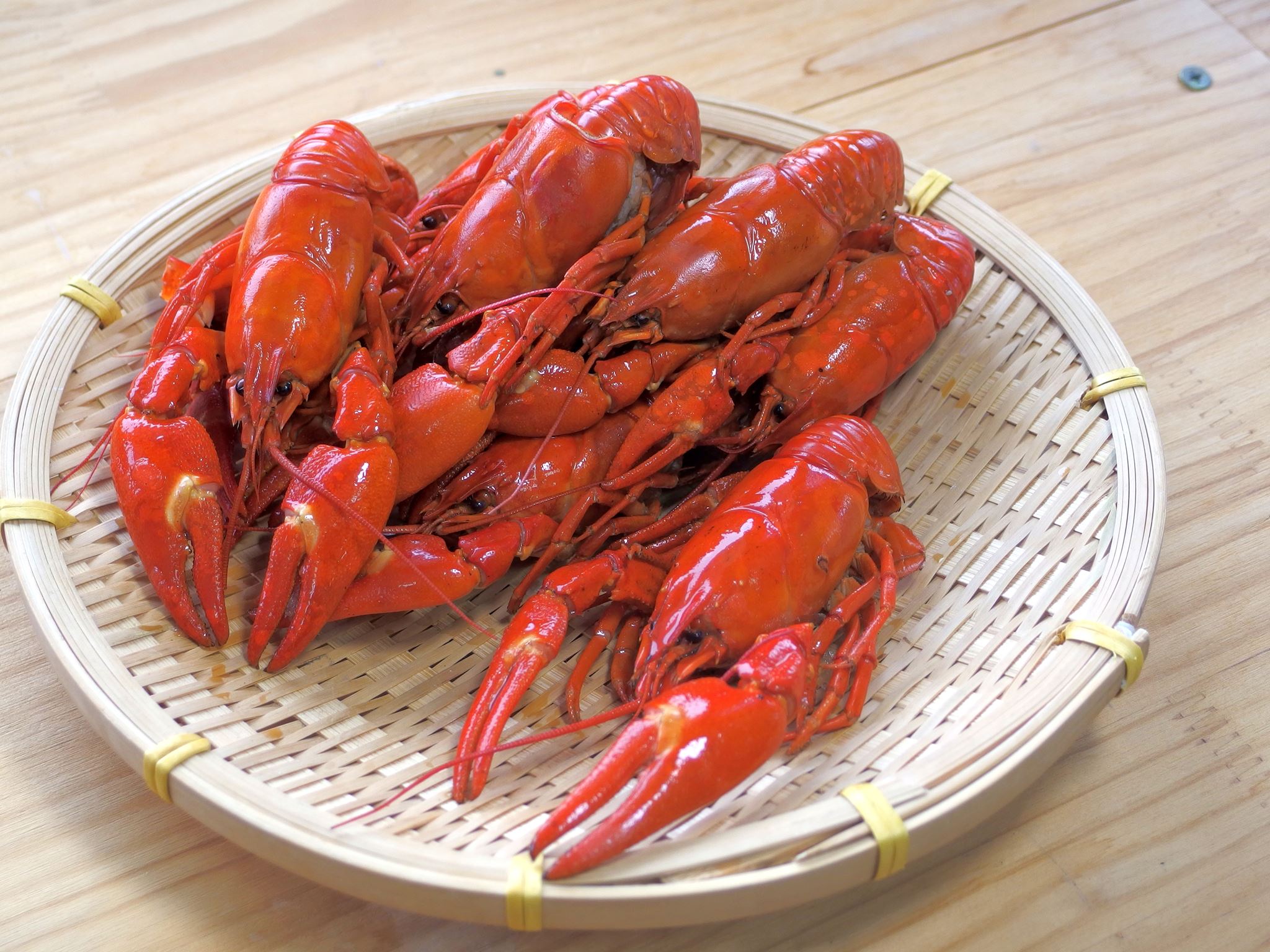
Hokkaido is at the top of most Japan travelers’ list for great food because the island has an abundance of top-quality seafood and a wide range of agricultural products. Over the past 30 years, the interest in Hokkaido by people from Southeast Asia has skyrocketed and for good reason! Here are just a few of Hokkaido's top food & cuisine treats:
Kaisen-don Donburi: This popular seafood (kaisen means seafood) dish is available in seafood markets across the island and in all traditional restaurants. Kaisen-don is a bowl of rice topped with various seafoods like ikura (salmon roe), hotate (scallops), ika (squid), and uni (sea urchin). Kaisen-don is usually flavored with soy sauce which you add when your bowl arrives at your table. The locally popular Uni Ikura donburi variation features a bowl of rice topped with sea urchin and salmon eggs. Sea urchin (uni) and salmon eggs (ikura) are exotic foods for most foreign tourists but that really depends where you come from.
Hokkaido crab: Kani, or crab is one of Hokkaido's most famous foods and come into season in the winter season. Hokkaido is famous for three different types of crab: king crab, snow crab, and hairy crab. In winter, most Japanese people enjoy crab in hotpot cuisine, on a bed of steaming rice, or dipped in a mixture of vinegar and soy sauce. Crab miso or crab brain is delicacy that is part of the crab season.
Hokkaido dairy products: Hokkaido is home to the largest dairy industry in Japan much of which is exported to the big cities on Honshu and Kyushu. Hokkaido is ranked number one in Japan for milk, cheese, cream, butter, and soft ice cream. Local butter cookies feature a creamy butter and raisin layer between two butter cookies.
Hokkaido ramen: Hokkaido is also at the top of the list for many ramen fans and for good reason. Sapporo is favored for its miso (fermented soy paste) ramen and Hakodate is popular for its shio (salt) ramen. Ramen, as many of you know, is usually served with topping choices such as generous slices of pork & chicken, boiled eggs, seafood, and all kinds of fresh vegetables. And vegetarian safe ramen is also easy to find in big cities in Hokkaido!
Hokkaido melons: Hokkaido harvests some of the best melons in Japan during the May to September season. The most prized local variety are the Yubari King Melons. Some of these melons retail for a fortune because they are known as the juiciest in the country. Some of their melons even reach a luxury level, where people pay top dollar for one of these cantaloupe crossbreeds. They are known to be the juiciest and the most delicious.
Hokkaido soup curry: The Hokkaido soup curry dish is unusual in Japan. As the name suggests, Hokkaido curry is thinner and less "creamy" than most of Japan super popular curries (not too spicy!). Like most Japanese curries the main ingredients usually include beef (sometimes other meats) and carrots and then a mixture of what's in season from the local fields. Hokkaido soup curries can be purchased in all seasons, but the biggest sales are in the cold months of November to March.
Jingisukan: Jingisukan or Genghis Khan is a Korean barbeque mutton (that's sheep meat) cuisine that is super popular all over Japan. And Jingisukan is usually an all-you-can-eat affair and one of the cheapest "meat" meals in the country. Given Hokkaido's local access to so much high-quality produce and meat sources it is no surprise that Hokkaido's Jingisukan is one of the best in Japan. The mutton is roasted, often at your table, in a helmet-shaped cast iron pan with cabbage, pumpkin, bean sprouts and other local produce. You can enjoy Jingisukan year-round in Hokkaido and elsewhere in Japan.
Ishikari nabe: Nabe is a winter hotpot cuisine that warms you up all over Japan when it's winter . . . Yes, this nabe dish is suitable for vegetarian. Hokkaido has abundance of fresh seafood and vegetables of different kinds. Ishikari hotpot cuisine is named after the Ishikari area in western Hokkaido. The Ishikari River has long been famous for its outstanding salmon harvest. So, the main protein ingredient in Ishikari nabe is salmon fillet, which is combined with potatoes, daikon radish, mushrooms, tofu, cabbage, miso soup, and a small number of spices. If you go to Hokkaido in winter and you are feeling cold, then Ishikari nabe is sure to warm you up!
Hokkaido beer and whiskey: Sapporo and the surrounding area is probably Japan's oldest beer and whiskey production area. Sapporo is a national brand for great beer and world-class whiskey. And historically, Sapporo has always been the place to create new beers and better whiskies and this has a lot to do with the island's agricultural strengths.
- Hokkaido private travel transportation, accommodation overview
- Hokkaido main hiking, nature and hot spring destinations
- Hokkaido food & cuisine overview for private travel
- Hokkaido history overview
Hokkaido history overview
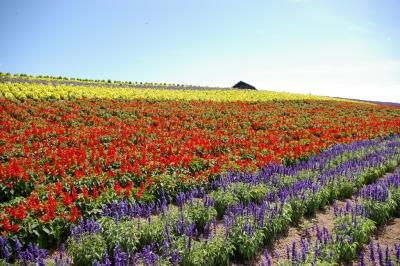
To understand the history of Hokkaido it is necessary to understand that the Japanese islands were home to more than a few indigenous peoples from the very beginning. The "dominant" ethic group became the Japanese people of today and the remaining few other groups were constantly pushed north as the Yamato people (i.e. the Japanese) expanded east from Kyushu and then north past Edo (Tokyo) until the only refuge was Hokkaido, a huge island that the Japanese only fully controlled at the end of the 19th century.
The Nihon Shoki (720 AD, Nara Period), Japan's second-oldest history book, first mentions Hokkaido. According to the text, a large navy and army was dispatched to northern Honshu and the southern edges of Hokkaido around 658 where they encountered the Mishihase and Emishi indigenous peoples. The Emishi are viewed as the ancestors of the present-day Ainu people. For anime fans, Studio Ghibli’s 1997 megahit Princess Mononoke clearly shows this transition as the Emishi are confronted with musket cannons and a heavy greed for natural resources, especially iron.
During the Nara and Heian periods, the peoples of northern Honshu and southern Hokkaido traded with the Japanese at the Dewa Province outpost that was an extension of the Japanese central government. Dewa was located at the northwestern tip of Honshu Island (present-day Yamagata Prefecture and Akita Prefecture). In the medieval ages, the people of Hokkaido became known as the Ezo who relied mainly on hunting and fishing. They got their rice and iron tools by trading with the Japanese at Dewa.
In the Muromachi period (1336-1573), the Japanese created a settlement at the southern end of the Oshima Peninsula, the southern tip of Hokkaido. As the settlement grew, disputes with the Ezo or Ainu increased. In the ensuing rebellion, Takeda Nobuhiro killed the Ainu leader, Koshamain, in 1456,and brutally ended the rebellion. Nobuhiro's descendants ruled and dominated the southern part of Ezochi territory until the end of the Edo period. Matsumae-han's economy relied upon trade with the Ainu. The earliest Japanese settlers in Hokkaido were known at the Wajin and they traded with the Ainu. Trade involved the exchange of knives, rice, sake and cloth for salmon and animal skins.
In 1869, the Meiji government gave Ezochi island its new name: Hokkaido. In 1890, coal was discovered in Hokkaido and by the 1930s there were over 200 coal mines.
Between 1869 and 1900 huge number of Japanese immigrated to Hokkaido, including thousands of newly unemployed samurai. The Meiji government using Western ideas decided Hokkaido would be best suited as an agricultural powerhouse and also a new source of fishing wealth.
The Ainu suffered but they also endured and today there are estimated to be 30,000 Ainu out of Hokkaido’s 5.5 million people.
Today, Hokkaido is still, in a way, the “Wild West” of Japan and a natural paradise similar to British Columbia, world famous for amazing powder skiing, vast fields of flowers and crops and an incredible range of national parks and coastal nature paradises.
- Hokkaido private travel transportation, accommodation overview
- Hokkaido main hiking, nature and hot spring destinations
- Hokkaido food & cuisine overview for private travel
- Hokkaido history overview
Learn more about Japan’s main islands with these links
Content by Ian Martin Ropke, owner of Your Japan Private Tours (est. 1990). I have been planning, designing, and making custom Japan private tours on all five Japanese islands since the early 1990s. I work closely with Japan private tour clients and have worked for all kinds of families, companies, and individuals since 1990. Clients find me mostly via organic search, and I advertise my custom Japan private tours & travel services on www.japan-guide.com, which has the best all-Japan English content & maps in Japan! If you are going to Japan and you understand the advantages of private travel, consider my services for your next trip. And thank you for reading my content. I, Ian Martin Ropke (unique on Google Search), am also a serious nonfiction and fiction writer, a startup founder (NexussPlus.com), and a spiritual wood sculptor. Learn more!